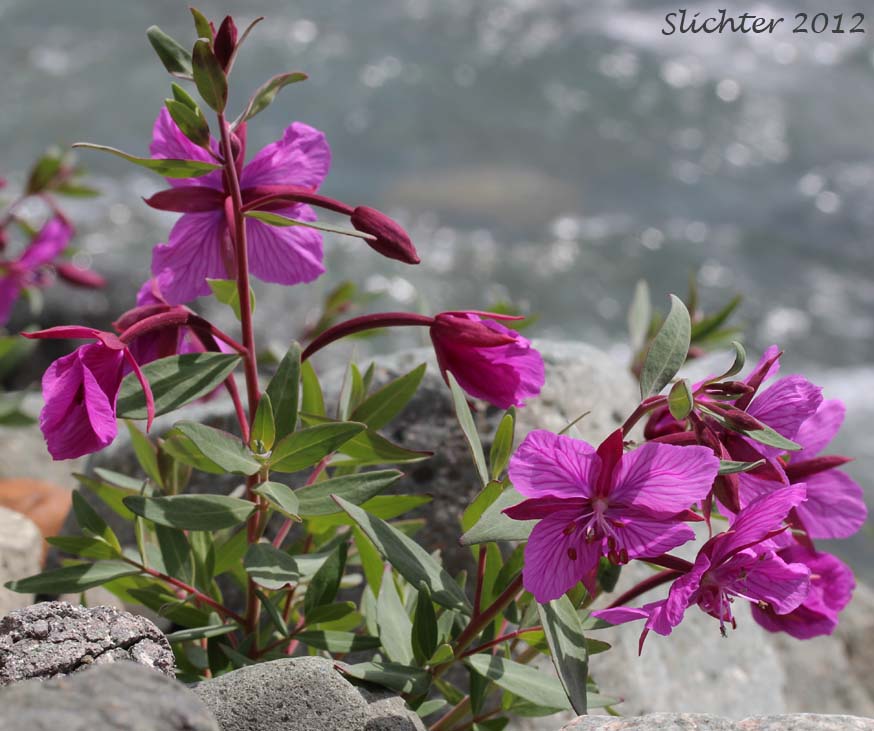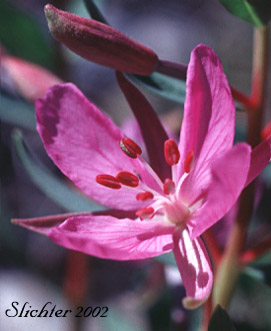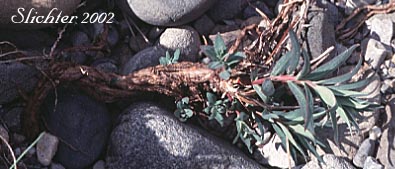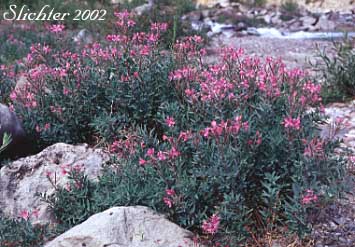
 The photo at right shows a
close-up of the erect fruits of broad-leaved fireweed as seen near Highway Pass in Denali National Park.........late August 2006.
The photo at right shows a
close-up of the erect fruits of broad-leaved fireweed as seen near Highway Pass in Denali National Park.........late August 2006.
The broad-leaved willow-herb is also known as broad-leaved fireweed. It is an attractive perennial wildflower with a strong taproot (See photo below.) and simple to branched stems from 10-40 cm long. The herbage consists of fine, short hairs on the stems, although short, appressed hairs may be more prevalent on the leaves. This often gives the leaves a glaucous or blue-green appearance. The leaves of the stems are alternate in arrangement and are generally lanceolate to lance-elliptic to narrowly ovate in shape. They range from 2-9 cm long and 7-25 mm wide. They are sessile or subsessile and are usually 2-5-4 times longer than wide. The leaf margins are mostly entire.
The racemes are leafy bracteate and seldom contain more than a dozen flowers. Each of the 4 sepals is reddish or purplish in color, narrowly lanceolate and measures from 12-20 mm long. Each of the 4 petals is bright pink-purple (rarely white) in color, broadly elliptic to obovate or rounded in shape and from 1.5-3 cm long. The stamens surpass the short recurved-deflexed style which is at most 1 cm long. The stigma is expanded into 4 lobes, each of which is 1.5-4 mm long. The capsule is 5-10 cm long and is densely pubescent.
Broad-leaved willow-herb may be found on talus slopes, gravel bars and other moist places near or above timberline.
Broad-leaved willow-herb may be found from the Arctic south through the Cascade Mts. and Sierra Nevada to California. It is found eastward to the Wallowa Mts of northeastern Oregon and Steens Mt. in southeastern Oregon and east to northern Nevada, northeastern Utah and Wyoming and Colorado. It is found eastward in Canada to Quebec and Newfoundland.



